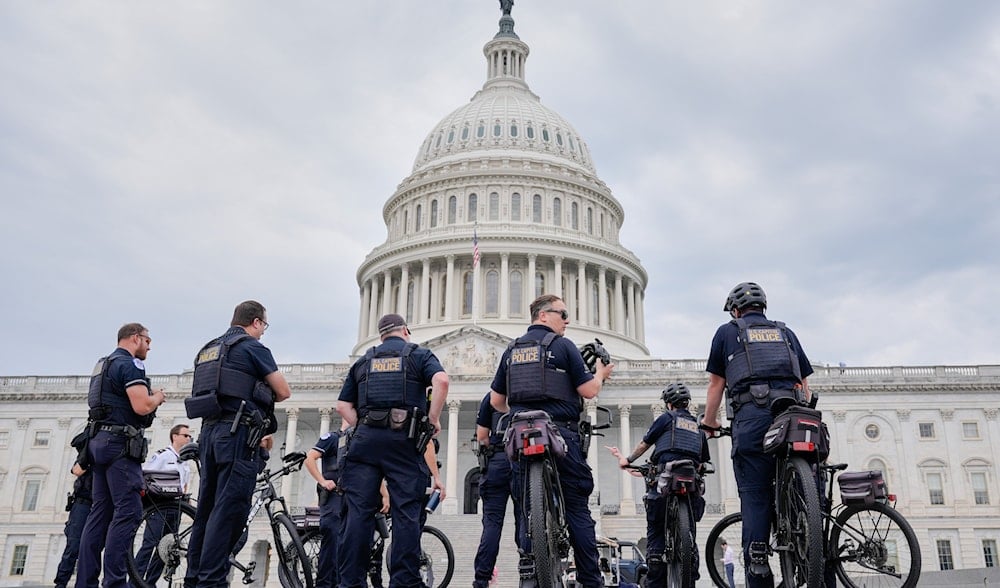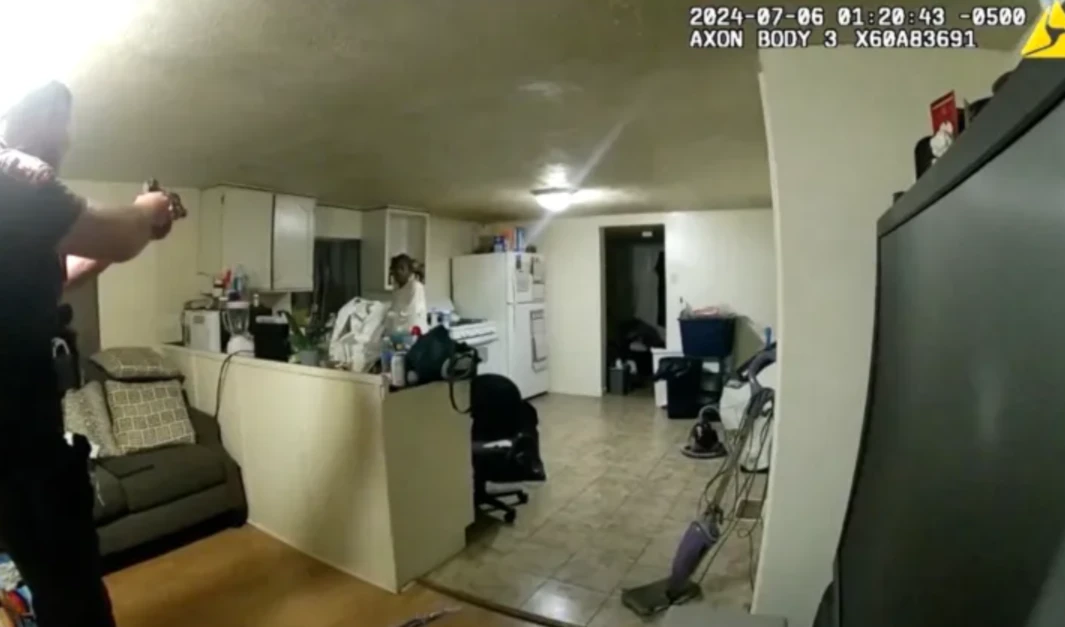From local to federal: How US Police became Trump’s 'political force'
The Intercept reports on how local, state, and federal law enforcement have quietly merged into a unified force aligned with White House priorities.
-

The US Capitol police officers patrol outside of Capitol building, Wednesday, Sept 24, 2025, in Washington (AP)
The Intercept recently published an alarming analysis of how American law enforcement has quietly transformed over the past six months. According to journalist Ian F. Blair, local police, state agencies, federal authorities, and even the military have begun operating as a unified force aligned with White House priorities, creating what he calls "The United Police State of America."
Blair reports that this consolidation happened without announcement or fanfare. There were no press conferences or public declarations. Instead, a mass reorganization of resources, rules, and personnel has rippled across the country.
The article argues that police silence during this historically turbulent period is itself a warning sign that fundamental changes are underway.
The transformation involves police forces evolving from independent local agencies into what Blair describes as a "political police force," an instrument serving a specific regime rather than community safety.
City by city and state by state, departments have realigned themselves with federal priorities, functioning as "free agents of fascism" who make themselves useful to emergent power structures.
Collaboration in action
Blair documents numerous examples of this coordination. In Los Angeles last June, the LAPD appeared to abandon decades of sanctuary city policy by working with federal forces to violently suppress immigration protest attendees.
Officers on horseback trampled protesters while alternating with Department of Homeland Security and National Guard personnel to deploy "less than lethal" rounds and pepper spray.
The cooperation extends beyond dramatic confrontations. According to The Intercept, LAPD officers have provided tactical support during ICE raids, including blocking formations during operations and helping federal agents navigate around protesters.
In Washington, DC, the Metropolitan police now formally cooperate with ICE through mayoral executive order, assisting with immigration checkpoints and responding to backup calls.
Blurred lines
The distinctions between different law enforcement agencies are dissolving, Blair reports. Sworn duties have become blurred between jurisdictions, with agents from various departments united simply by the word "POLICE" on their vests.
National Guard troops spread mulch on the National Mall while DEA, Secret Service, and ATF agents conduct traffic stops to check immigration status. Military lawyers are being recruited as immigration judges.
This mission creep accelerates existing trends. Blair notes that New York police already handle school crossing guards, vendor citations, and community center programs, but the expansion has intensified dramatically.
The surveillance apparatus
The Intercept's investigation reveals an alarming fusion of surveillance systems. As of October 2025, ICE has signed over 1,000 cooperation agreements with state and local agencies in 40 states under its 287(g) program.
Blair cites multiple investigations showing how deeply surveillance networks have merged. Local police and ICE access massive amounts of data from license plate readers, even in sanctuary cities. New York State Police funnel gang database information into federal systems used for deportations.
ICE has field-tested facial recognition apps that access government biometric databases via smartphone and obtained Israeli spyware to hack phones and encrypted apps. According to the article, ICE has spent $10 million on Clearview AI facial recognition software and maintains contracts with Peter Thiel's Palantir, which built "ImmigrationOS," a searchable super-network allowing agents to comb through government and private databases.
Democratic complicity
Perhaps most troubling, The Intercept reports that Democratic leaders in blue cities and states have enabled this expansion. Blair argues these officials use Trump's actions as cover for their own desired police increases while adopting similar crime narratives.
Los Angeles Mayor Karen Bass increased the LAPD budget from $1.86 billion to $1.98 billion before publicly criticizing federal troop deployments. DC Mayor Muriel Bowser greenlit her police force to implement "broken-windows" policies while praising the surge of officers.
New York Governor Kathy Hochul deployed National Guard troops to the subway system while simultaneously asking Trump not to send troops to the city. California Governor Gavin Newsom, despite criticizing Trump, deployed the California Highway Patrol to fight crime based on similar justifications.
Blair's conclusion is stark: "There never was a red police state or a blue police state, only a United Police State of America." The journalist argues that police state expansions long predate current deportation programs; the coordination is simply becoming more sophisticated.
The transformation from community policing to a unified enforcement apparatus serving federal priorities represents a fundamental shift in American governance, one happening largely without public debate or democratic accountability.

 4 Min Read
4 Min Read









